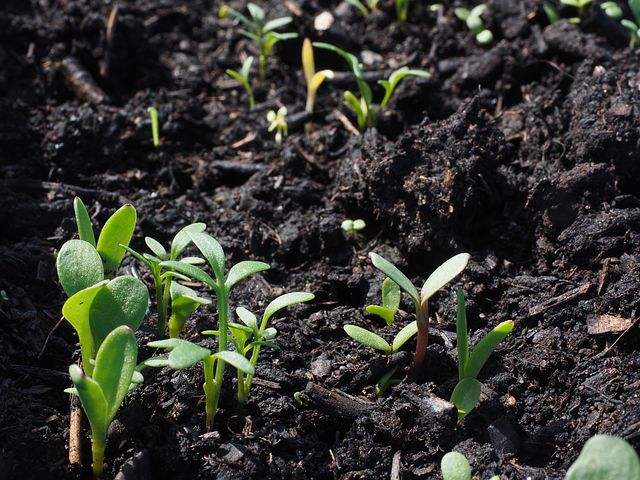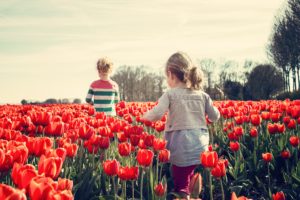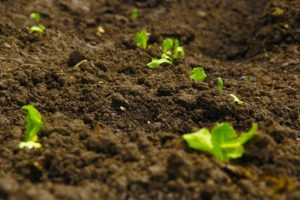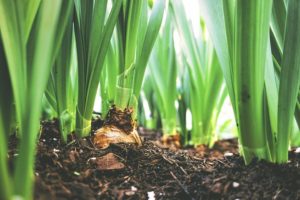Son muchas las personas que se preocupan de dar a conocer a los más jóvenes el papel fundamental que tienen los suelos en nuestra vida. En esta sección recogemos el título de artículos relacionados con la enseñanza del suelo. Los iremos poniendo poco a poco. Si eres el autor y quieres escribir una breve reseña nos la puedes enviar a edafoeduca@upv.es.
SCHOOL
Willison, D., Davidson, C. M., & Scott, F. J. (2020). How safe is your playground? Analyzing soil in Scottish schools through a university outreach project. Journal of Chemical Education, 97(12), 4321-4329.
de Souza, A. C., Barbosa, F. E., Diniz, S. F., Sobrinho, J. F., & Falcao, C. L. D. C. (2023). Methodology for Understanding Soil Erosion. Journal of Sustainable Development, 15(4), 1-43.
FIELD
Aleman, R., Duball, C., Schwyter, A., & Vaughan, K. (2021). Remote delivery of field experiences in soil sciences. Natural Sciences Education, 50(1), e20049.
Schulze, D. G., Rahmani, S. R., Minai, J. O., Johnston, C. T., Fulk‐Bringman, S. S., Scott, J. R., … & Mashtare Jr, M. L. (2021). Virtualizing soil science field trips. Natural Sciences Education, 50(1), e20046.
Blanco-Canqui, H., Ruis, S. J., Speth, C. A., & Lee, D. J. (2018). Teaching undergraduate soil management to diverse majors: Linking lectures with field practicals. Natural Sciences Education, 47(1), 1-7.
AL-Ismaily, S. S. A. I., & Al-Maktoumi, A. K. (2011). Studying soil catena in arid-zone environment: Case study for soil science students. Atlas Journal of Science Education, 1(2), 24-28.
Weil, R. R. (2003). Getting to know a catena: A field exercise for introductory soil science. Journal of Natural Resources and Life Sciences Education, 32(1), 1-4.
LABORATORY
Conde-Cid, M., Fernández-Calviño, D., & Arias-Estévez, M. (2020). Investigating Flocculation Capacities of Different Cations and Their Implications for Soil Structure and Sustainability. Journal of Chemical Education, 98(2), 639-643. Laboratory exercise designed for Soil Science undergraduate students in the second-course in the Agricultural Engineering and Environmental Sciences department at the University of Vigo. It was developed for the study of the effect of three cations (Al, Ca, and Na) on the flocculation and dispersion of soil particles.
Gómez Armesto, A., Nóvoa Muñoz, J. C., Arias Estévez, M., Núñez Delgado, A., Álvarez Rodríguez, E., & Fernández Sanjurjo, M. J. (2019). Introducing Students to Remediation of Polluted Soils: Influence of Waste-Based Amendments on Cd Extractability. Journal of Chemical Education, 97(1), 221-225.
Fernández-Calviño, D., Pérez-Rodríguez, P., Nóvoa-Muñoz, J. C., & Estévez, M. A. (2017). Is the total concentration of a heavy metal in soil a suitable tool for assessing the environmental risk? considering the case of copper. Journal of Chemical Education, 94(8), 1133-1136.
de Avellar, I. G., Cotta, T. A., & Finageiv Neder, A. D. V. (2012). Using Artificial Soil and Dry-Column Flash Chromatography To Simulate Organic Substance Leaching Process: A Colorful Environmental Chemistry Experiment. Journal of Chemical Education, 89(2), 248-253. A simple and low-cost experiment is described in which the mobility of three organic compounds in an artificial soil is examined using dry-column flash chromatography.
Elsayed-Ali, A. H., Abdel-Fattah, T., & Elsayed-Ali, H. E. (2011). Laboratory Experiment on Electrokinetic Remediation of Soil. Journal of Chemical Education, 88(8), 1126-1129.
Ibanez, J. G., Balderas-Hernandez, P., Garcia-Pintor, E., Barba-Gonzalez, S. N., Doria-Serrano, M. D. C., Hernaiz-Arce, L., … & Lozano-Cusi, A. (2011). Laboratory experiments on the electrochemical remediation of the environment. Part 9: Microscale recovery of a soil metal pollutant and its extractant. Journal of Chemical Education, 88(8), 1123-1125.
Harle, H. D., Leber, P. A., Hess, K. R., & Yoder, C. H. (2003). A concept-based environmental project for the first-year laboratory: Remediation of barium-contaminated soil by in situ immobilization. Journal of chemical education, 80(5), 561.
Gruenhagen, J. A., Delaware, D., & Ma, Y. (2000). Quantitative Analysis of Non-UV-Absorbing Cations in Soil Samples by High-Performance Capillary Electrophoresis. An Experiment for Undergraduate Instrumental Analysis Laboratory. Journal of Chemical Education, 77(12), 1613.
Sarquis, A. M., & Storer, D. A. (2000). Measuring Soil Phosphates Using Ion-Exchange Resins: A Final Project for Freshman Chemistry. Journal of Chemical Education, 77(6), 748.
OTHER TOOLS FOR LEARNING
Amador, J. A. (2019). Active learning approaches to teaching soil science at the college level. Frontiers in Environmental Science, 7, 111.
Roca, N., & Ríos, M. (2019). Soil classification maps: A valuable tool for learning, interpreting and transferring soil knowledge. Catena, 180, 103-109.
Virto, I., Imbert, B., Peralta, J., de Soto, I., González-Tejedor, I., Antón, R., … & Enrique, A. (2019). Oinez Basoa: Using school-managed afforested land for soil education in Navarre, Spain. Spanish Journal of Soil Science, 9(3).
Abit Jr, S. M., Curl, P., Lasquites, J. J., & MacNelly, B. (2018). Delivery and Student Perceptions of Drive‐Through Laboratory Sessions in an Introductory‐Level Soil Science Course. Natural Sciences Education, 47(1), 1-8. The article includes details of activities concerning soil texture, soil color, soil structure, penetration resistance, soil pH, liming materials, soil charge, effect of soil texture on cation exchange and activities activities involving fertilizers and water flow.
Vaughan, K. L., Vaughan, R. E., & Seeley, J. M. (2017). Experiential learning in soil science: Use of an augmented reality sandbox. Natural Sciences Education, 46(1), 1-5.
Turk, J. K. (2016). The development and evaluation of lecture tutorials for introductory soil science. Nat. Sci. Educ. 45: 2016-0002. Eight lecture tutorials were developed covering topics within soil physics (specific surface area, texture, and bulk density), soil mineralogy (clay minerals, weathering), and soil fertility (carbon cycle, C/N ratio, and Liebig’s Law). The hands-on lecture tutorials use simple objects to illustrate the concept: blocks for specific surface area, Styrofoam balls and toothpicks to build models for clay minerals, and paper cups for Liebig’s La
Barbarick, K. A. (2010). Crossword puzzles as learning tools in introductory soil science. Journal of Natural Resources and Life Sciences Education, 39(1), 145-149.
Barbarick K.A., Ippolito J.A., Butters G., & Sorge G.M. (2005). An infiltration exercise for introductory soil science. J. Nat. Resour. Life Sci. Educ. 34, 72–76.
CONTEST
Pedron, F. D. A., Galbraith, J. M., Scharenbroch, B. C., Pereira, M. G., & Fontana, A. (2023). Soil Judging e‐Contest: The virtual experience expanding the soil learning process. Natural Sciences Education, e20125.





